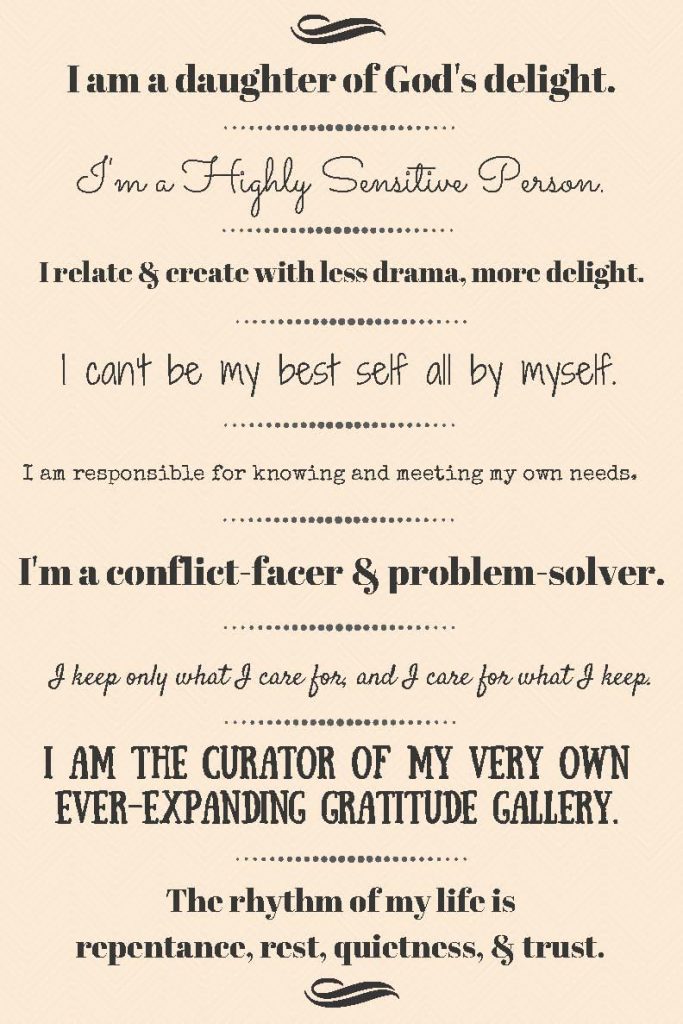
by Guest Blogger | Jan 2, 2017 | Blog, Overwhelmed |

by Cheri Gregory
I should be more like him.
As I sit through the memorial service for a truly amazing man—a beloved teacher and pastor to so many—this one thought plays over and over in my head.
I should be more like him.
Whenever Jon preached about God’s grace, he’d break down in tears, so great was his gratitude toward his Savior. His death opens a Grand Canyon-sized hole in our school and church community that none of us can even begin to fill.
I should be more like him.
But I don’t know how.
The “Should Be’s” Overtook Me
During conversation after the memorial service, Tim Z, our AP History teacher, asks me how my AP English students are doing.
“Do you think you’ll ever go back to teaching sophomore English?” he asks.
“No,” I reply. “I don’t have the patience for students who refuse to read. If they hate books, I don’t want to deal with them.”
Tim’s eyes light up. “Oh, I just love the kids who come into my class hating history!”
I stare, partly in admiration and partly in shame.
I should be more like him.
Tim talks animatedly. “I see every history-hating student as a future history major. I make it my personal challenge to figure out what it takes to help them change their minds.”
I nod dumbly.
I should be more like him.
But I don’t know how.
Accepting That I’m Exactly Who I’m Supposed to Be
I linger in the church after the memorial service, pondering the legacy of Jon Speyer and mulling over my conversation with Tim Z.
I should be more like them.
But how?
Train myself to cry when I talk about God? Force myself to enjoy aliterate students?
No.
Trying to be someone I’m not isn’t the answer.
What if …
A new thought begins to sprout, like a seed pushing up through the soil.
What if I quit trying to be more like him or them?
What if I start trying to be … (dare I say it) … more like me?
Nothing more or less than exactly who God created me to be.
I Stopped Worrying and Started Listening
It’s been four years since this epiphany.
Since I started regularly asking, “Who did God create me to be?” and really listening for the answer.
The tool that’s helped me keep the answer front-and-center as I make decisions throughout my work day is my Personal Manifesto.
One page of Spirit-led words that declares, “This is who I am and who I aspire, through God’s grace and power, to become.”

Two Things Your Personal Manifesto Will Do for You
Your Personal Manifesto says, “This is it!”
Which can be interpreted two different ways:
1 — Through your Personal Manifesto, you declare who you are.
Your Personal Manifesto is not an itemized list of who a parent or teacher or spouse or child or boss—not even a beloved role model—expects you to be.
Your Personal Manifesto is a pray-cessed expression of who God has created you to be.
2 — Through your Personal Manifesto, you define who you are not.
It helps you define who God did not create you to be, for yourself and others. This can be downright terrifying for those of us who are used to being “all things to all people.”
It’s your God-guided assertion that you’re done trying to be someone you’re not. (No matter how much others may want you to keep trying.)
There’s nothing wrong with having a role model or seeking out mentors. But our goal should never be trying to be more like him or her or them.
Your goal is to always listen to Him.
Who does He say you are?
Instead of making New Year’s resolutions (that will only last for a week), how about creating a Personal Manifesto that will carry you through the rest of your life? Sign up for great ideas and resources about how to get out from Overwhelmed and you will receive “How to Write Your Personal Manifesto” as our gift to you. Get off the overwhelming cycle of making and breaking resolutions and create a gentle plan for lasting life change.
And learn more about living out a life out of overwhelmed in our new book, Overwhelmed, How to Quiet the Chaos and Restore Your Sanity.
 Cheri Gregory is a teacher, speaker, author, and Certified Personality Trainer. Her passion is helping women break free from destructive expectations. She writes and speaks from the conviction that “how to” works best in partnership with “heart, too.”
Cheri Gregory is a teacher, speaker, author, and Certified Personality Trainer. Her passion is helping women break free from destructive expectations. She writes and speaks from the conviction that “how to” works best in partnership with “heart, too.”
Cheri is the co-author, with Kathi Lipp, of The Cure for the “Perfect” Life and Overwhelmed.
Cheri has been “wife of my youth” to Daniel, her opposite personality, for twenty-eight years and is “Mom” to Annemarie (25) and Jonathon (24), also opposite personalities.
Are you a Highly Sensitive Person? Take the self-quiz and discover the surprising strengths of a tender heart.


by kathilipp | Jun 2, 2016 | Blog, Love Your Husband, Marriage, The Husband Project |

The Day I Stopped Shoe Shopping at Safeway: A Marriage Metaphor
For many years, I did my shoe shopping at Safeway.
This was difficult, because the Safeway near my home doesn’t sell shoes, only groceries. But I’ve never been one to let a challenge stop me! I became all the more determined to do my shoe shopping at Safeway.
Every week, I scoured the aisles: no shoes.
Every week, when the cashier pleasantly asked me, “Did you find everything today?” I responded loudly, “No, I did not. I came here for shoes, like I do every week, and I still haven’t found any shoes.
Every week, I filled out a complaint form at the so-called “Customer Service” counter: Why are there no shoes in this store?
Eventually, I became so focused on shoe shopping at Safeway that I started going daily, just to see if they’d finally set up a shoe aisle.Day in and day out, I experienced nothing but disappointment after disappointment after disappointment.
I grumbled about Safeway to my friends. Soon, complaining about the lack of shoes at Safeway soon became my sole topic of conversation.
It all seemed so unfair.
The Day I Discovered Payless ShoeSource
Then, one day, I happened to drive by a Payless ShoeSource. As I walked in, I could not believe my eyes: shoes! Aisles and stacks and end caps of shoes! I bought two pair on a BOGO sale!
My next stop was Safeway. As I walked in, I could not believe my eyes: so many beautiful groceries! Fruits and vegetables … breads and cakes … cheeses and deli meats … I filled my cart and headed to check out.
The cashier nervously asked, “Did you find everything today?” and when I responded, “Why yes, I did, thank you!” She looked shocked. The manager seemed surprised when I walked by the customer service comment box with a friendly wave.
The day I stopped doing my shoe shopping at Safeway was the day I started enjoying grocery shopping at Safeway.
A Marriage Metaphor
Okay, so I made all of that up.
I would never be silly or downright foolish enough to go shoe shopping at Safeway, would I? Well, in the early years of my marriage, I stubbornly “did my shoe shopping at Safeway” by expecting Daniel to meet some of my needs he was entirely unequipped to meet.
The more I demanded he meet these specific needs, the more hyper-focused I became on his failures. The more I focused on his failures, the more I ignored his myriad strengths. Sadly, for many years I acted as if everything he did bring to our marriage and all the ways he did meet my needs were worthless because I was so fixated on a few failures.
After years of frustration (for both of us!), I was convicted that 1 Corinthians 12:4-6 applies to the gifts our husbands bring to marriage:
There are different kinds of gifts, but the same Spirit distributes them. There are different kinds of service, but the same Lord. There are different kinds of working, but in all of them and in everyone it is the same God at work.”
When we continually downplay the gifts our husbands brings to our marriages, we discount the work of the Holy Spirit.
On the flip side, when we take responsibility for the needs we’ve been trying to pawn off on our men, we may be astonished to discover all the ways they truly bless us.
Perhaps it’s time for you to stop shoe shopping at Safeway, too?
 Cheri Gregory is a teacher, speaker, author, and Certified Personality Trainer. Her passion is helping women break free from destructive expectations. She writes and speaks from the conviction that “how to” works best in partnership with “heart, too.”
Cheri Gregory is a teacher, speaker, author, and Certified Personality Trainer. Her passion is helping women break free from destructive expectations. She writes and speaks from the conviction that “how to” works best in partnership with “heart, too.”
Cheri is the co-author, with Kathi Lipp, of The Cure for the “Perfect” Life and the upcoming Overwhelmed.
Cheri has been “wife of my youth” to Daniel, her opposite personality, for twenty-eight years and is “Mom” to Annemarie (25) and Jonathon (23), also opposite personalities.
Cheri blogs about perfectionism, people-pleasing, highly sensitive people, and hope at www.cherigregory.com.
More about being an HSP!


by kathilipp | Feb 8, 2016 | Clutter Free |

Guest post by Cheri Gregory
My Clutter Free journey began in my bedroom.
Like many clutterers, I’d spent decades using our master bedroom as the “just throw it all in there and slam the door” stash-and-dash solution when company was due in an hour.
But discovering that I’m an HSP—a Highly Sensitive Person—has transformed how I view my bedroom.
HSPs are easily overwhelmed by sensory stimuli.
We need to create ourselves a sanctuary, a safe quiet place of refuge where we can seek shelter when the world overwhelms us.
When we ask ourselves, “How can I make my bedroom a true sanctuary for my tired body and soul?” the obvious answer is to first oust every ounce of clutter.
HSPs process an overabundance of disorienting visual stimuli all day every day. The last thing we need are piles of confusing clutter visually assaulting us in the one room we retreat to for safety.
Moving Past Our Stories to Sanctuary
Of course, clutter rarely leaves without a fight. Thanks to our extra-strength HSP consciences, the three stories Kathi says all clutterers tell themselves can feel especially like gospel truth to us:
“I need to keep this just in case”
When you tell this fear-full story, you let fears from your past control your future.
“But so-and-so gave it to me!”
In this guilt-ridden story, people from your past (who aren’t concerned about you, just how you make them feel) are allowed to control your future.
“But I spent so much money on it!”
This shame-filled story allows a mistake from your past to control your future.
As these stories come up, we can respond with compassion and permission.
Compassion for our feelings of fear, guilt, and shame.
Permission to keep only what we need and want.
Making Your Bedroom an HSP Sanctuary
Once the clutter is out of your bedroom, grab a pad of paper, a favorite pen, and sit down on your bed.
Write these four senses at the top of different pages: touch, sight, sound, and smell.
Look around the room and ask yourself, “What do I want in my bedroom? What sensory experiences are especially soothing, relaxing, and restful for me?”
Ponder each sense for a few minutes and write down what comes to you. Here are some questions I’ve asked myself:
Touch
- What textures do I love?
- Smooth high thread count Egyptian cotton sheets?
- A soft blanket, knit with slubby yarn?
- What temperature(s) help me relax and sleep? Do I need:
- An electric blanket?
- A cooler grade of comforter?
- A heating pad or Thermaphore to ease my back pain?
- A rotating column fan?
- What skin products do I want to keep in my nightstand?
- Hand moisturizer?
- Lip balm?
- Nail clipper and file?
Sight
- What colors are calming for me?
- What patterns — or lack of pattern — do I prefer?
- How well are the lighting options working for me?
- Can I make the room as light as I want it?
- Can I make the room dark as I need it?
Sound
- How can I block out disruptive sounds?
- Earplugs?
- Noise-cancelling headphones?
- How can I bring in pleasing sounds?
Smell
- What scents irritate me, giving me headaches or making my face flush?
- Might I want to try unscented detergent, softener, and dryer sheets with my bedding?
- Could I natural citrus cleaning products?
- Can I find fragrance-free candles?
- What scents relax and sooth me?
Make a wish list of what you want and need to add to your bedroom sanctuary.
But no frantic shopping spree to buy a peaceful bedroom all at once.
Reign in your HSP intensity, say “no” to Perfectionism, and commit to adding new items gradually, enjoying them one at a time.
Using Your Bedroom as an HSP Sanctuary
Decluttering your bedroom will not automatically transform it into a sanctuary. Your bedroom will become your sanctuary as you seek sanctuary in it.
This also takes compassion and permission.
Compassion, rather than criticism, for your HSP self.
Permission to be tired, to need quiet, rest, and refuge.
If you find yourself resisting rest, remember that Jesus himself invites you to rest…
Come to me, all you who are weary and burdened,
and I will give you rest.
Take my yoke upon you and learn from me,
for I am gentle and humble in heart,
and you will find rest for your souls.
Matthew 11:28-29 (NIV)
…and say “yes” by taking refuge in the One who offers true rest.
Whoever dwells in the shelter of the Most High
will rest in the shadow of the Almighty.
I will say of the Lord,
“He is my refuge and my fortress,
my God, in whom I trust.”
Psalm 91:1-2 (NIV)
*****
Wondering if you, too, might be an HSP?
Subscribe to Cheri’s blog and receive your FREE “HSP–Who, Me?” PDF!


 Cheri Gregory is a teacher, speaker, author, and Certified Personality Trainer. Her passion is helping women break free from destructive expectations. She writes and speaks from the conviction that “how to” works best in partnership with “heart, too.”
Cheri Gregory is a teacher, speaker, author, and Certified Personality Trainer. Her passion is helping women break free from destructive expectations. She writes and speaks from the conviction that “how to” works best in partnership with “heart, too.”




 Cheri Gregory is a teacher, speaker, author, and Certified Personality Trainer. Her passion is helping women break free from destructive expectations. She writes and speaks from the conviction that “how to” works best in partnership with “heart, too.”
Cheri Gregory is a teacher, speaker, author, and Certified Personality Trainer. Her passion is helping women break free from destructive expectations. She writes and speaks from the conviction that “how to” works best in partnership with “heart, too.”






